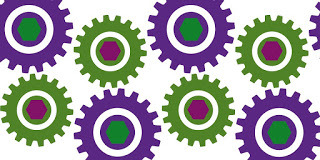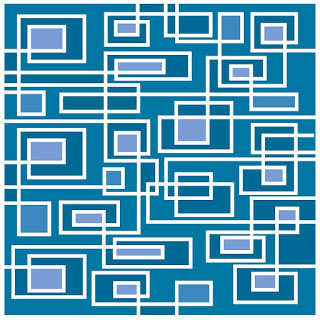Performance Management vs. Digital Organizational Design
 Performances are not just numbers with metrics, they are numbers in context, results related to your business goals both at strategic and operational level. The reality in most organizations though is the performance which is forcibly jammed within an existing organizational structure with silo functions and overly rigid hierarchy. Measuring and managing performance means setting performance metrics, making objective assessments, understanding results, adjusting plans, and making decisions to ensure the great business results. In reality, very few companies, very few companies are truly using organizational development (OD) resources. But due to the digital nature of hyper-connectivity and interdependence, more often, the successful performance improvement initiatives should have representation and input from OD and people management. Organizational Design vs. Performance Management, how to take an integrated approach, fine tune OD and improve performance management effectiveness and maturity?
Performances are not just numbers with metrics, they are numbers in context, results related to your business goals both at strategic and operational level. The reality in most organizations though is the performance which is forcibly jammed within an existing organizational structure with silo functions and overly rigid hierarchy. Measuring and managing performance means setting performance metrics, making objective assessments, understanding results, adjusting plans, and making decisions to ensure the great business results. In reality, very few companies, very few companies are truly using organizational development (OD) resources. But due to the digital nature of hyper-connectivity and interdependence, more often, the successful performance improvement initiatives should have representation and input from OD and people management. Organizational Design vs. Performance Management, how to take an integrated approach, fine tune OD and improve performance management effectiveness and maturity?The digital dimension of organizational structure is enjoying a powerful tailwind to adapt to changes and improve performance: OD is part of digital strategy because the characteristics of the digital world are complex, uncertain, and unknowns are commonplace, you just have to prepare for the different scenario. One shouldn’t think the strategy is easy. If you don't take the time and make the effort to get the strategy right, you could end up "doing the wrong things right." Further, strategy management and performance management need to work neck to neck. There’s no doubt that the well-defined measures and KPIs are important factors to manage performance and keep track of strategy execution effectively. Digital is all about the accelerated speed of changes, time horizons and blurred functional, and business territories with interdisciplinary digital practices. In traditional organizational structure, the processes are more formal and rigid, that has been the past, and present for some digital laggards.When the enterprise is at risk of being defeated by smaller, nimbler, agiler competitors, then the management with silo mentality understands it is in their own benefit to collaborate and build the “horizontal” organizational interdependencies to achieve better time to market for business exploring and expanding, accelerate the speed and achieve high-performance business results. Digital evolution needs catalysts for change, digital means flow, mind flow, information flow, and deploy knowledge from one subsidiary to another seamlessly, to achieve digital fluency. New generations of digital technologies such as social platform or other collaboration tools are enabling not only the structured processes of the past but also the unstructured processes of the digital normality, for enforcing cross-functional communication and collaboration, harnessing innovation, and ensure the performance of the entire organization is superior to the sum of its pieces.
The goal of digital organizational structure tuning is to strike the delicate balance between solid and flow: Compared to the traditional organization as the mechanical system keeps spinning, digital organizations today are more like the organic living system which keeps growing. Hence, it needs to be solid enough to “keep the lights on,” but also fluid enough to interact with the expanded digital ecosystem. This is the perception about the digital business, just solid enough to give some sort of form/meaning and open enough to its environment to allow movement (of people, ideas, and information) in and out. Traditional hierarchical lines will phase out and a collective of business partners will emerge working collaboratively to set and achieve organizational goals as well as strategy. From performance management perspective, the operation driven performance indicators keep track of the business functioning and firmness - the solid side; and the strategic- oriented performance indicators capture the flow - the responsiveness, changeability, and agility of the organization, for measuring the business’s growth potential. It is about the hybrid organizational structure well blends structured and unstructured processes to run with two speeds: industrial speed and digital speed, to bring the multifaceted performance measurement.
 Tuning organizational design for achieving people centricity: Digital becomes the very fabric of modern business, being outside-in and customer-centric is the new mantra for forward-look digital organizations today. Hence, it is also important to tune organization design to improve business performance from a customer perspective. Customer satisfaction is a state where the customer perceives a business experience to be positive, and customers are the key influencer of decision-making. It is also important to improve employee satisfaction. Digital makes an impact on the speed to run business, the empathy to their people and the orchestration of their capability in high mature digital organizations. High mature digital organizations integrate organizational design (OD) into the process design and organizational re-engineering, to enable employees doing their work more productively. Digital favors hybrid solutions, ideally, the physical organizational structure, relationships, and virtual platforms & social connections wrap around each other to ensure responsibility, smoothly information flow and the employee empowerment, with the goal to unleash the collective human potential and achieve the high-performance result for the long run.
Tuning organizational design for achieving people centricity: Digital becomes the very fabric of modern business, being outside-in and customer-centric is the new mantra for forward-look digital organizations today. Hence, it is also important to tune organization design to improve business performance from a customer perspective. Customer satisfaction is a state where the customer perceives a business experience to be positive, and customers are the key influencer of decision-making. It is also important to improve employee satisfaction. Digital makes an impact on the speed to run business, the empathy to their people and the orchestration of their capability in high mature digital organizations. High mature digital organizations integrate organizational design (OD) into the process design and organizational re-engineering, to enable employees doing their work more productively. Digital favors hybrid solutions, ideally, the physical organizational structure, relationships, and virtual platforms & social connections wrap around each other to ensure responsibility, smoothly information flow and the employee empowerment, with the goal to unleash the collective human potential and achieve the high-performance result for the long run.
The purpose of organizational design is to improve the business maturity from functioning to firm to delight and ultimately achieve high performance business result. And the goal of performance measurement and management is to keep adapting, improving, focus on the things matter and improve overall business effectiveness, efficiency, and maturity.
Follow us at: @Pearl_Zhu
Published on April 04, 2017 22:50
No comments have been added yet.



